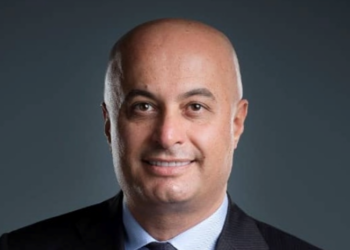SentinelOne announced an extension of its strategic collaboration agreement (SCA) with Amazon Web Services (AWS), designed to deliver generative AI benefits. Under the terms of the agreement, SentinelOne’s Purple AI cybersecurity analyst will be powered by Amazon Bedrock, to provide AI-powered security and protection for customers. Additionally, the expanded SCA will increase investments in SentinelOne’s AI-powered Singularity Platform within AWS Marketplace, empowering enterprises to quickly and easily access end-to-end protection from a unified, AI-powered platform.

“SentinelOne is focused on AI-powered security that protects customers against today’s machine-speed attacks and tomorrow’s novel threats. AWS has proven to be an increasingly strategic collaborator when it comes to delivering on that promise and accelerating our shared mission,” said Gregor Stewart, Vice President, AI and Machine Learning Engineering, SentinelOne. “By taking advantage of AWS AI infrastructure and Amazon Bedrock to train, tune, and serve our own models, we can give AWS customers access to today’s best generative AI security analyst – and future Purple AI innovation – delivered entirely inside AWS.”
SentinelOne’s Purple AI empowers security teams of all levels to detect threats earlier, respond faster and stay ahead of attacks. Purple AI translates natural language security questions into structured queries, summarises event logs and indicators, guides analysts of all levels through complex investigations with recommended next steps and auto-generated summary emails, and scales collaboration with shared investigation notebooks. Purple AI supports Open Cybersecurity Schema Framework (OCSF) – an open-source effort by AWS and leading cybersecurity partners – and provides a native view of both Singularity data and third-party security data, giving teams the ability to see and manage all security events. As a result, security teams can streamline investigations, uplevel analysts, simplify reporting and dramatically speed threat hunting and investigations.
SentinelOne continues to increase investment in AWS infrastructure utilisation to support the ongoing innovation, development, and delivery of the Singularity Platform, including Purple AI.
As part of their commitment to joint innovation, SentinelOne will allow customers to choose specific large language models (LLMs) via Amazon Bedrock, such as Anthropic’s Claude 3.5 Sonnet, to power Purple AI. Amazon Bedrock is a fully managed service that offers a choice of high-performing foundation models (FMs) from leading AI companies via a single API, along with a broad set of capabilities organisations need to build generative AI applications with security, privacy and responsible AI. SentinelOne will also use Amazon Bedrock Custom Model Import and customisation capabilities, including Amazon Bedrock Prompt Management, to create solutions that are finely tailored to specific use cases.
“The collaboration between AWS and SentinelOne is a game-changer, enabling us to identify, try, buy, and deploy the best security solutions for our business faster than ever before.” said Guilherme Blanco, Vice President, Infrastructure and IT at EBlock. “From a technology perspective, AWS and SentinelOne working together, is not only helping to protect our business, but also driving significant operational efficiency.”
To help more customers realise these benefits, SentinelOne will take advantage of new investments in the AWS co-sell programme to bring the entire Singularity Platform to AWS Marketplace and make it easier for shared customers to find and procure the security solutions they need via a procurement vehicle they know and trust.
“At AWS, our mission is clear: to help customers build, scale and run their business securely,” said Chris Grusz, Managing Director, Technology Partnerships, AWS. “By deepening our collaboration with SentinelOne and working together to address the growing need for generative AI-driven security solutions, this announcement reinforces our ability to help our customers build resilience and better defend their environments against cybersecurity threats today and in the future.”










Discussion about this post